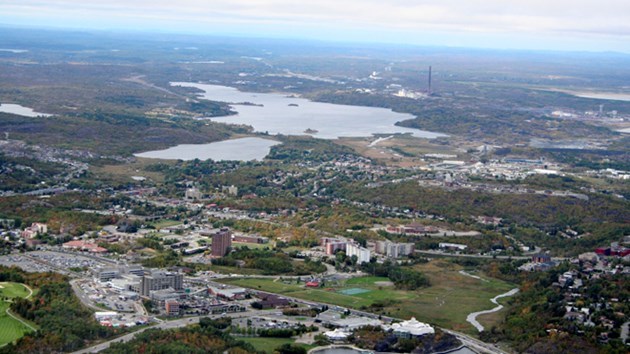Even though the community has been evacuated, Henvey Inlet First Nation isn't entirely empty.
Indigenous Services Canada told Sudbury.com on Monday that the community of 192 people had been evacuated. Of these, approximately 90 evacuees are staying in hotel rooms in Sudbury (10 are in Parry Sound; the remaining people are said to be staying with family members or friends).
However, Chief Wayne McQuabbie is not among the evacuees.
While chiefs across the country are set to travel to BC this week to vote in the 2018 election of the National Chief of the Assembly of First Nations, McQuabbie has remained in his community to protect homes and properties, and to ensure the community's pets are cared for.
"The community is not in imminent danger. Leadership decided to call a State of Emergency and evacuate the community because we want to ensure the safety of the community," Chief McQuabbie said in a news release. "We're also protecting homes and properties. We'll ensure the safety of the community until there is no more potential danger."
Indigenous Services Canada has assigned an Indigenous liaison to assist evacuees in Sudbury and the Emergency Management Assistance Program will reimburse all eligible costs relating to the state of emergency. An information meeting took place on July 23 to relay all information to community members.
April McQuabbie, Chief McQuabbie's daughter, said the evacuees' stress level is high.
"I think it's just very very intense for a lot of people," McQuabbie said. "A lot of them are worried about their homes, a lot of them are worried about their pets. They couldn't take everything with them. They fit who they could and what they could so it left them with very little."
McQuabbie said her father has described how eerie the community feels with the people gone. She said he has been working almost non-stop, only leaving to get food for those pets who remain in the community.
"He said it's like a ghost town. He said it's so weird not seeing people walking outside or sitting outside their homes or the kids playing," April said. "He said it's like nothing he's ever seen there before, but he feels that he should take on that responsibility and look out for everything for everybody since they can't."
The Ministry of Natural Resources and Forestry fire crews assisted with the evacuation.
Keeping an eye on the skies and on the rain forecast, as of now, residents of Henvey Inlet First Nation are expected to return home on July 27, but that is simply an estimate, as the situation is constantly being assessed based on the conditions on the ground.
On July 20, the fire was 384 hectares in size. Heat and dry weather saw that fire jump to over 1,200 hectares the following day. On July 22, Henvey Inlet First Nation declared the state of emergency. As of late Monday, the Parry Sound 33 fire that prompted the evacuation measured 5,612 hectares.
Parry Sound 33 is one of 21 fires in the northeast listed as "out of control."
A story from CBC suggested the source of the Parry Sound 33 fire could be on the site of the massive windfarm project being undertaken on the First Nation.
